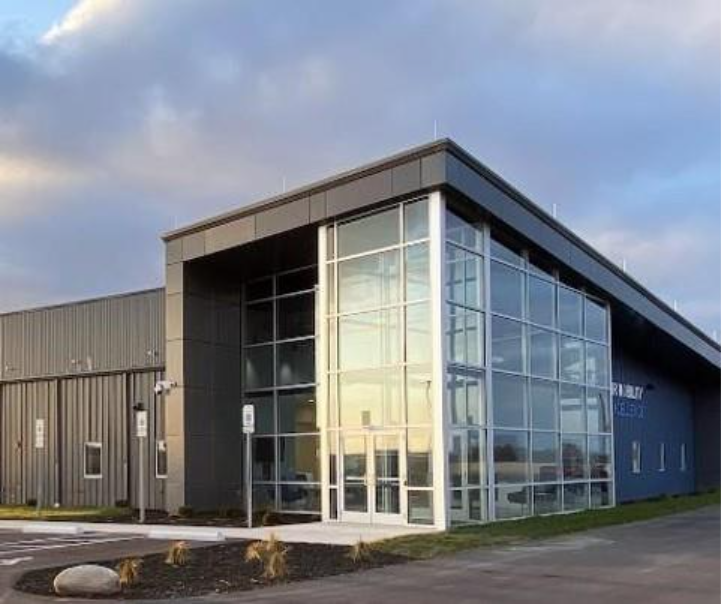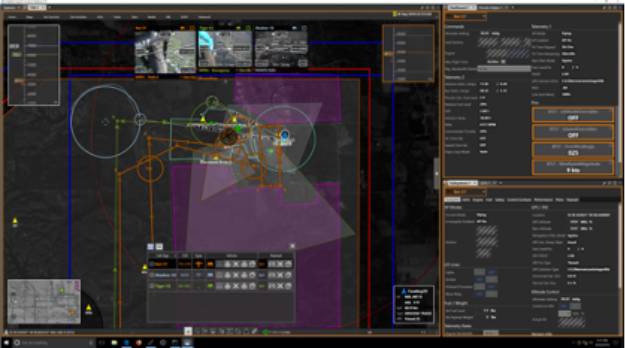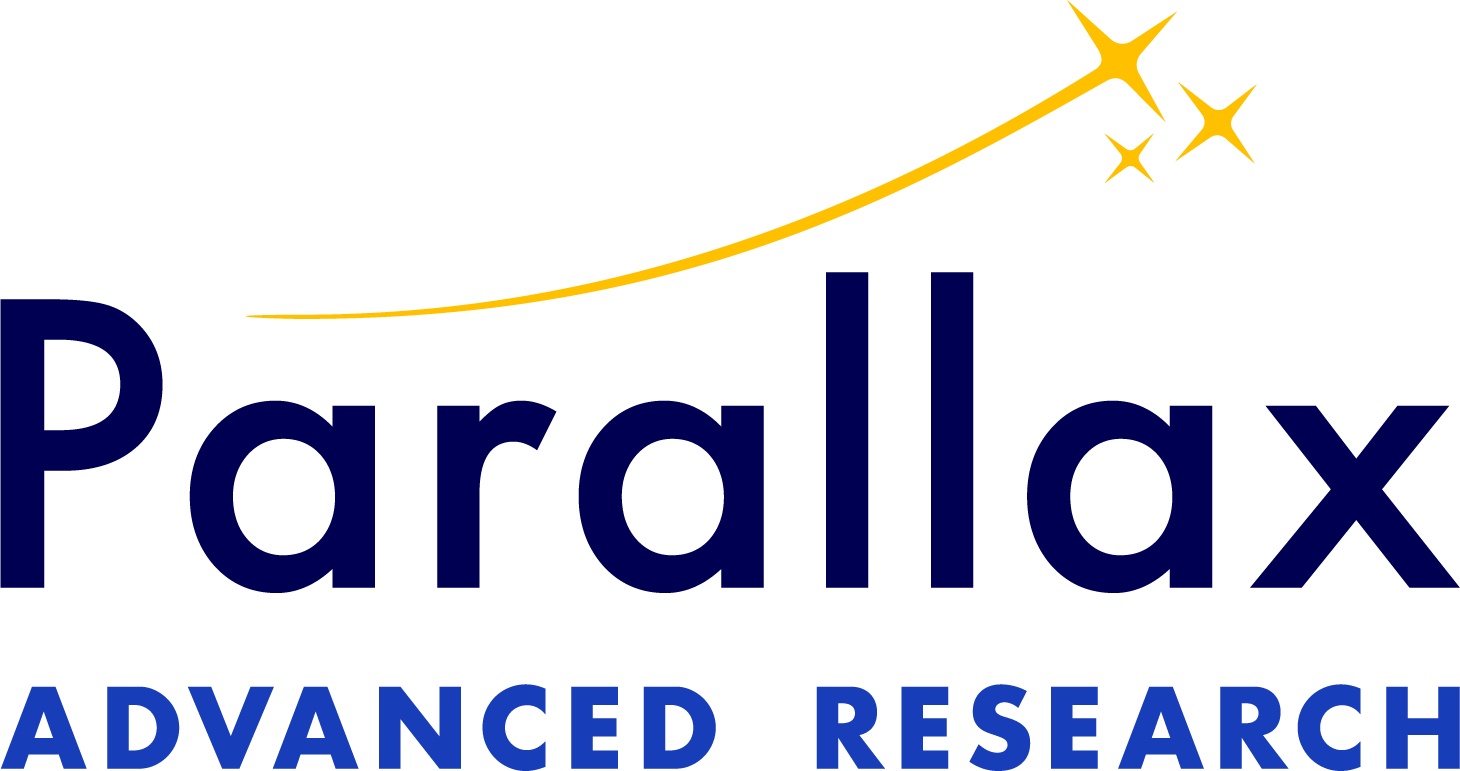Photo courtesy of NAAMCE
Tenancy at the National Advanced Air Mobility Center of Excellence strengthens Parallax’s UAV test and evaluation footprint, accelerates Vigilant Spirit integration, and deepens collaboration with Ohio’s AAM ecosystem.
When Parallax Advanced Research put down roots at the National Advanced Air Mobility Center of Excellence (NAAMCE) at Springfield-Beckley Airfield, the move wasn’t about square footage—it was about airspace, infrastructure, and proximity to mission partners.
“It’s an incredible facility,” said Dr. Dave Gross, who leads Parallax’s UAS/Vigilant Spirit efforts for federal defense customers. “From the hangar you can taxi straight to the runway. It’s convenient, capable, and purpose-built for the kind of operations we care about.”

Photo courtesy of NAAMCE
Why Springfield
Springfield offers something rare for uncrewed flight in the National Airspace System (NAS): a mature detect-and-avoid environment enabled by the SkyVision system and an expansive Certificate of Authorization (COA) area tailored for beyond visual line of sight (BVLOS) operations.
“What’s unique about Springfield—because of SkyVision—is the FAA radar tie-ins,” Gross said. “You need to fly at higher altitudes so the radars can pick you up. That’s important when you’re operating in open airspace without a control tower; you still need the same situational awareness and traffic deconfliction as any crewed aircraft.”
The COA spans a large swath of largely rural, farm-field terrain, with activation of segmented ranges as needed—ideal conditions for multi-vehicle autonomy experiments where vertical separation and altitude blocks matter.
“Vigilant Spirit is about a single operator controlling multiple vehicles,” said Gross. “To test that safely, you separate vehicles in altitude—500 feet between each—and you need a big block of airspace. Springfield gives us that.”

Photo courtesy of NAAMCE
Test & evaluation that mirrors real operations
Parallax’s presence at NAAMCE is grounded in practical flight test realities: weather ceilings, traffic coordination, and the need to iterate fast.
“The biggest limitation in flight test is cloud ceiling,” Gross said. “At Springfield, if it’s obviously going to be a low-ceiling day, we can call it, reset, and avoid burning program time just waiting out the weather. Proximity to Wright-Patt and our own teams matters.”
The field’s ecosystem amplifies that speed. The Ohio Department of Transportation (ODOT) maintains a wall-to-wall monitoring room for test coordination; regional industry shares the runway; and higher-ed partners are embedded in the work.
The role of Vigilant Spirit

Caption: Designed and maintained by Parallax, the Vigilant Spirit® Control Station turns every operator into a force multiplier—providing scalable human-machine teaming for uncrewed systems. With an extensible, non-proprietary architecture, Vigilant Spirit offers flexible automation levels, advanced simulation and training components, and cross-platform functionality across vehicle classes (Groups 1-5), supporting a wide range of UAS missions.
Gross describes a clear arc for human-machine teaming in advanced air mobility—and where Vigilant Spirit fits.
“There’s going to be a period where you need oversight on autonomy until it’s proven,” he said. “Somewhere, you’ll have a remote operator watching the aircraft, ensuring the autonomy is doing what it’s supposed to. That’s a role for Vigilant Spirit—maintaining air traffic awareness and providing intervention if needed.”
That oversight concept extends to mission-realistic scenarios suitable for Springfield’s COA. One example the team is shaping involves medical logistics across Ohio—coordinating simulated AAM aircraft with UAS assets while deconflicting shared airspace.
“We’re building realistic vignettes—think organ transport legs between hospitals and airfields—blending simulated AAM and live UAS inside the Springfield area,” Gross said. “It’s exactly the kind of integration problem advanced air mobility will have to solve.”
A catalyst for Ohio’s AAM leadership
Ohio leaders have long said the state should be the nation’s proving ground for AAM and UAS. At Springfield, that vision feels tangible: state investment in SkyVision and facilities, federal partners like AFRL in the neighborhood, and a tenant community that spans operators, educators, and industry.
“There are politics in how national test sites were designated years ago,” Gross said, “but Springfield has built something unique. When you combine the COA, SkyVision, the tenant mix, and our proximity to Wright-Patt, you get an environment where meaningful integration testing can happen. Having these pieces in place has allowed us to bring on additional people and mature supporting capabilities.”
Looking ahead
Parallax currently maintains an office at NAAMCE and plans to deploy full test setups as customer programs require. The team anticipates a next wave of multi-vehicle autonomy demonstrations, deeper simulator-to-live integration with partner platforms, and continued maturation of operator oversight concepts—each designed to push autonomous flight toward safe, scalable, and certifiable operations in the NAS.
In Gross’s view, NAAMCE is more than a building; it’s an operating concept made real.
“You need the right airspace, the right infrastructure, and the right partners if you’re going to move from lab autonomy to operational autonomy,” he said. “At Springfield, those pieces come together—and that’s why we’re here.”
###
About Parallax Advanced Research & the Ohio Aerospace Institute
Parallax Advanced Research is an advanced research institute that tackles global challenges through strategic partnerships with government, industry, and academia. It accelerates innovation, addresses critical global issues, and develops groundbreaking ideas with its partners. In 2023, Parallax and the Ohio Aerospace Institute, an aerospace research institute located in Cleveland, OH, formed a collaborative affiliation to drive innovation and technological advancements across Ohio and the nation. The Ohio Aerospace Institute plays a pivotal role in advancing aerospace through collaboration, education, and workforce development.
